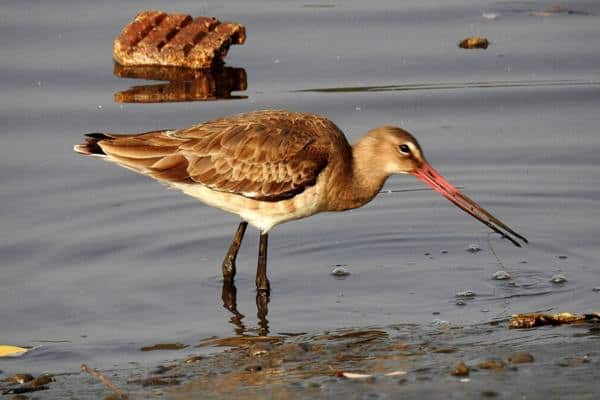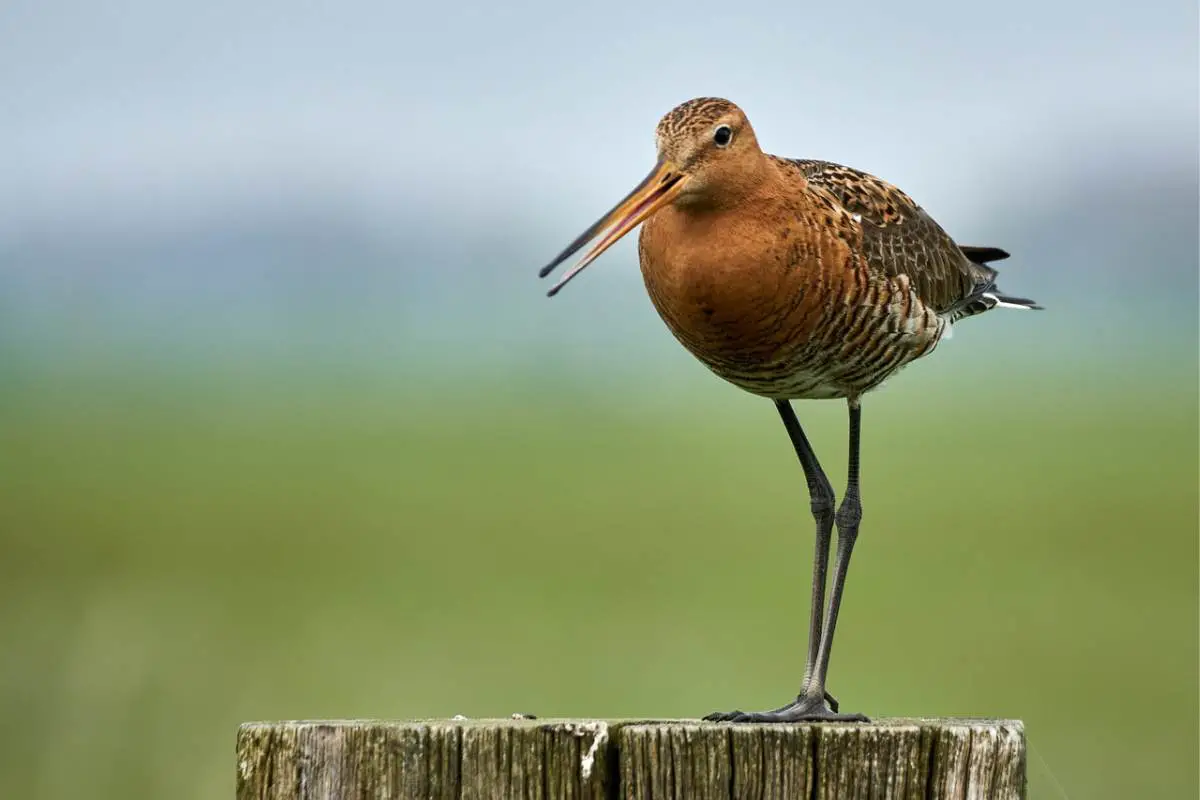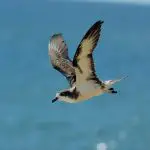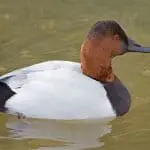Common Name: Black-tailed Godwit
Scientific Name: Limosa limosa| Size | Diet | Range in Hawaii | Status in Hawaii |
|---|---|---|---|
| 16 in. - 18 in. | beetles, bugs, and caterpillars, earthworms and spiders | O'ahu and Maui | Near Threatened |
The Black-tailed Godwit, also known as Limosa limosa, is a striking bird that is known for its impressive migration patterns. These wading birds can be found in various parts of the world, including Europe, Asia, and Africa.
However, did you know that the Black-tailed Godwit can also be spotted in Hawaii? That’s right! Although not a common sight, some Black-tailed Godwits have been known to make their way to Hawaii during their migratory journey.
In this article, we’ll explore the fascinating characteristics and behaviors of the Black-tailed Godwit and learn more about its presence in the beautiful islands of Hawaii.
Black-tailed Godwit
Appearance

The Black-tailed Godwit is a medium-sized wading bird with an elegant and distinctive appearance. It measures approximately 16-18 inches (40-45 centimeters) in length. This species has long legs that are pale gray or bluish-gray in color.
Its body is predominantly brown with varying shades, ranging from pale cinnamon to rich chestnut. The head and neck are a lighter shade of brown, often with a reddish tinge during the breeding season.
One of the key distinguishing features of the Black-tailed Godwit is its long, straight bill that curves slightly upwards at the tip. The bill is pinkish at the base and gradually darkens to a dark gray or black color towards the tip.
During flight, the Black-tailed Godwit displays a bold black and white wing pattern, with black primary feathers contrasting against white secondaries. Overall, the Black-tailed Godwit presents a graceful and slender profile, perfectly adapted for its wetland habitats.
Diet
The Black-tailed Godwit has a diverse and adaptable diet, primarily consisting of invertebrates. During the breeding season, their diet primarily includes insects such as beetles, bugs, and caterpillars, as well as earthworms and spiders.
They forage in wetland areas, probing their long bills into the soil or shallow water to extract prey. Outside of the breeding season, Black-tailed Godwits may also consume crustaceans, mollusks, small fish, and aquatic vegetation. They are opportunistic feeders and can adjust their diet based on the availability of food resources in their habitat.
Nesting

The Black-tailed Godwit follows a distinct nesting pattern in its breeding range. These birds typically breed throughout the Palearctic region, selecting wetland habitats for their nesting sites. They show a preference for areas with tall vegetation, such as meadows, marshes, and damp grasslands near bodies of water.
The nesting season for Black-tailed Godwits usually begins in late spring or early summer. The male establishes a territory and engages in courtship displays to attract a mate. These displays often involve aerial acrobatics, vocalizations, and visual demonstrations of their elaborate plumage.
Once a pair is formed, they construct a nest on the ground, usually concealed within dense vegetation to provide protection and camouflage. The nest is a shallow scrape or depression lined with grass, leaves, and other plant materials. The female takes the primary responsibility for nest building, while the male defends the territory.
The female lays a clutch of typically four eggs, which are incubated by both parents for about three to four weeks. During this period, the adults take turns to keep the eggs warm and protected. After hatching, the chicks are precocial, meaning they are relatively developed and able to leave the nest shortly after birth.
They are guided by their parents to nearby feeding areas where they can find insects, worms, and other small invertebrates. Black-tailed Godwits are protective parents and will defend their nest and offspring from potential threats, including predators or intruding birds. Once the chicks have grown and gained sufficient strength, they will gradually become independent and join other young birds in flocks, preparing for their migratory journey or wintering period.
Behavior
The Black-tailed Godwit is a species known for its interesting behavior. These birds exhibit strong migratory instincts, breeding in the Palearctic region and undertaking long-distance journeys to their wintering grounds in eastern Africa and Australia. During migration, they may pass through Micronesia, including the Marshall Islands, where they are known to winter regularly.
Black-tailed Godwits are highly social birds, often forming large flocks during migration and at wintering sites. They are known for their distinctive “pottering” feeding behavior, probing the ground with their long bills to search for invertebrates, insects, and other small prey items.
They have a preference for wetland habitats, such as marshes, mudflats, and shallow coastal areas, where they can find an abundant food supply. During the breeding season, male Black-tailed Godwits engage in elaborate courtship displays to attract females.
These displays involve aerial acrobatics, calling, and other visual and auditory cues. Once a pair forms, they establish and defend a territory for nesting. The female constructs a nest on the ground, typically in grassy areas near water, and lays a clutch of eggs.
Black-tailed Godwits are vigilant and wary birds, often alerting their flock members to potential threats with their distinctive alarm calls. They are also known for their strong homing instincts, returning to the same breeding sites year after year. This behavior helps ensure their reproductive success and survival.
Habitat

The Black-tailed Godwit occupies a diverse range of habitats throughout its distribution. During the breeding season, these birds prefer wetland areas such as marshes, meadows, and damp grasslands. They often choose nesting sites near bodies of water, including lakes, ponds, and rivers, where they can find suitable feeding grounds and protection for their young.
During migration and winter, Black-tailed Godwits utilize a variety of habitats. They can be found in coastal areas such as mudflats, estuaries, and tidal flats, which provide abundant food resources in the form of invertebrates and aquatic organisms. They also frequent flooded fields, wet grasslands, and agricultural areas where they can forage for insects, worms, and other small prey.
These birds show a preference for habitats with shallow water and muddy or sandy substrates, as they use their long bills to probe the ground in search of food. The availability of suitable feeding grounds is a key factor in their habitat selection. They are often associated with areas that have a mix of open water, exposed mudflats, and vegetated patches, which offer a variety of foraging opportunities.
Range
The Black-tailed Godwit is a rare visitor to the Hawaiian Islands. While they primarily breed in the Palearctic region and winter in eastern Africa and Australia, a few individuals have been observed in the Hawaiian Islands during their migration.
These sightings have occurred in various locations, including Kanaha Pond on Maui and Kealia NWR and the Ki’i Unit of JCNWR on O’ahu. The presence of the Black-tailed Godwit in Hawaii is sporadic and represents a unique occurrence within their overall range.
Conservation Status
The Black-tailed Godwit (Limosa limosa) is currently listed as “Near Threatened” by the International Union for Conservation of Nature (IUCN). This classification signifies that the species is not yet critically endangered but faces significant conservation concerns.
The Black-tailed Godwit’s population has been declining in recent years, primarily due to habitat loss and degradation. Wetland drainage, conversion of natural habitats for agriculture or urban development, and changes in land management practices have resulted in the loss of suitable breeding and feeding grounds for these birds. The destruction of wetlands reduces the availability of their preferred habitats, leading to decreased breeding success and diminished foraging opportunities.
Interesting Facts
1. Cooperative nesting
In certain populations, Black-tailed Godwits practice cooperative nesting, where multiple females lay their eggs in a single nest, which is then shared and incubated by a male. This behavior helps increase breeding success and reduces the risk of predation.
2.Courtship ritual
Breeding pairs of Black-tailed Godwits engage in elaborate courtship displays. These displays involve aerial acrobatics, wing-fluttering, and vocalizations as part of their mating rituals.
3.Beak adaptations
Black-tailed Godwits have long, straight bills with a slight upward curve at the tip. Their bills are uniquely adapted for probing deep into soft mud or wet soil to find invertebrates, insects, worms, and crustaceans.
4.Flexible feeding behavior
Black-tailed Godwits display flexible feeding behavior, adapting their feeding strategies based on food availability and environmental conditions. They can switch between probing in soft mud, foraging in shallow water, and even feeding on grassy uplands.
5.Satellite tracking studies
Scientists have utilized satellite tracking technology to monitor the migration patterns and movements of Black-tailed Godwits. These studies have provided valuable insights into their preferred stopover sites, wintering grounds, and the challenges they face during their journeys.
Frequently Asked Questions
1.How long do Black-tailed Godwits live?
Black-tailed Godwits can live up to 20 years in the wild.
2.What is the purpose of the long bill of Black-tailed Godwits?
The long bill of Black-tailed Godwits is adapted for probing into mud and soil to find invertebrates, their primary food source.
3.Are Black-tailed Godwits social birds?
Yes, Black-tailed Godwits are social birds, especially during the breeding season. They often gather in large flocks and engage in courtship displays and territorial behaviors.
4.While Black-tailed Godwits are not specialized swimmers, they can swim if necessary, especially during migration when they may encounter water




